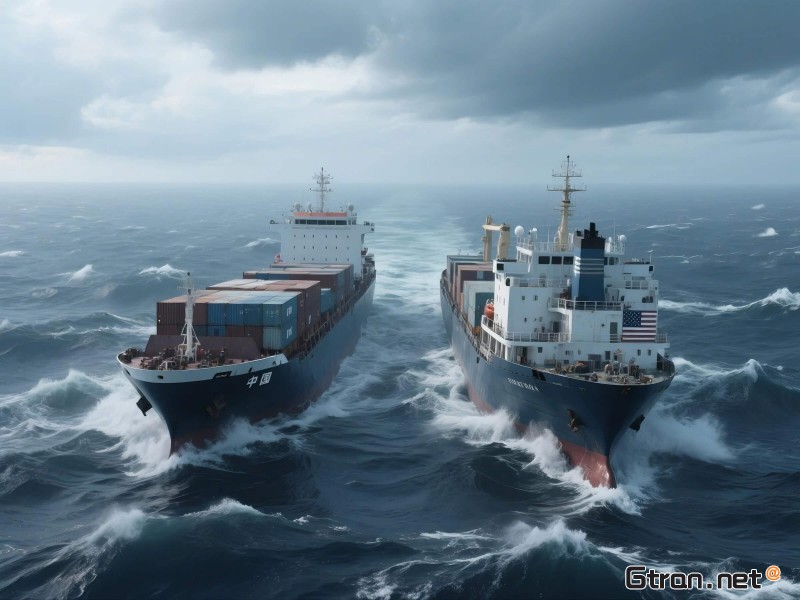As the trade war between the US and China intensifies, shipping carriers are responding to weakening demand by suspending planned transpacific services. Premier Alliance member Ocean Network Express (ONE) has confirmed the indefinite suspension of its PN4 service, which was originally scheduled to launch in May. According to Destine Ozuygur, chief analyst at eeSea, the timing of the suspension aligns with ongoing tariff-related challenges that are weighing heavily on carriers’ operations.

Ozuygur noted that eeSea is closely monitoring ONE’s PS5 service, which connects Los Angeles and Oakland. Similar to the PN4, the PS5’s launch date was pushed back to May, and no definitive vessel assignments have been announced despite the service’s imminent start date. “While we may not yet see a dramatic surge in blank sailings in May, the numbers are steadily rising,” she said.
According to eeSea’s database, there are 49 blanked sailings forecast for the Far East-North America trade this month, with 36 already confirmed for May. Ozuygur predicts that these numbers could exceed 40 in May as carriers finalize plans to reduce capacity.
MSC, the Swiss-based carrier, has already blanked two sailings on its Orient weekly service, which serves Long Beach, Oakland, and Portland. The company has replaced slots 4 and 6 on the schedule with “TBN” (to be notified), effectively halving the capacity of the 10,600 TEU service over the next eight weeks. Additionally, MSC blanked another voyage this month and added two more “TBN” slots on its May schedule for its Pearl service, which operates between Vietnam, Taiwan, China, and the US West Coast.
Hong Kong-based TS Lines is also suspending services, including its AWC2 service, which was scheduled to begin on April 29. The final voyage of the service will be operated by the TS Tokyo, an 18,000 TEU vessel, with its last call to Los Angeles expected on April 13. TS Lines’ only remaining transpacific service is the AWC, which has an average weekly capacity of 4,800 TEU and is jointly operated with SeaLead Shipping.
Container market analyst Braemar highlighted that the primary challenge for 2025 is a projected decline in trade demand, with uncertainty surrounding US reciprocal tariffs complicating demand forecasting. The company estimates that container trade growth will fall to just 1%–2% this year, down from the 6%–7% predicted last year.
Data from the Vizion tradeview platform shows a significant drop in US import bookings, with the past seven days totaling around 169,000 TEU, compared to 516,000 TEU the previous week. For China-US volumes, the figure dropped to 54,000 TEU from 148,000 TEU week-on-week. US export bookings also declined, falling to 83,000 TEU from 139,000 TEU the week prior, with US-to-China volumes dropping nearly 50% to 4,400 TEU from 8,000 TEU. “Global container shipping appears to be slowing,” commented Ben Tracy, VP of strategic business development for Vizion.
S&P Market Intelligence data reveals that mainland China’s imports from the US fell 9% year-on-year in the three months ending February 28, including a 17.9% decline in products covered by the “phase one” trade deal. The new tariffs now cover all $143 billion worth of US exports to mainland China, representing 7% of all US exports and 6.4% of mainland China’s imports.
Meanwhile, in the air cargo sector, sources reported that all Atlas Air flights from Hong Kong to the US have been canceled until at least the end of the week, though Atlas Air confirmed to *The Loadstar* that flights are continuing as scheduled. FedEx, UPS, and Cathay Pacific are currently the only operators maintaining regular flights.
Today, the US will implement 104% tariffs on Chinese imports and increase de minimis-related fees for shipments valued below $800, primarily targeting e-commerce. In retaliation, China has raised its tariff on US goods to 84% and imposed restrictions on critical minerals.


